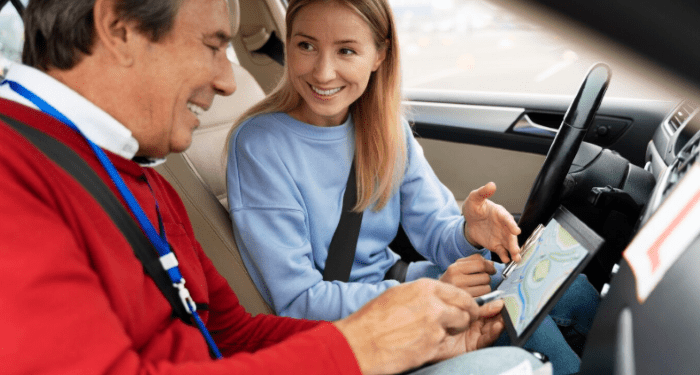Imagine this: you are an experienced driver in your home country and you are looking to go abroad to the UK, or maybe move there permanently, but you’re worried about how different driving patterns are over there. You don’t know what side of the road to drive on, where to stop for fuel or a charge, or whether your driving license will even be accepted.
Sound familiar? If so, this detailed guide will cover everything you need to know about driving in the UK as an international visitor.
Learn the Basics & Know the Rules
The UK requires all drivers to drive on the left-hand side of the road, except when overtaking on motorways when you temporarily switch lanes, not on the right in some European countries like France or Spain – it can be confusing, we know! It’s important when traveling to drive in the UK that you bring all the necessary documentation, from your driver’s license and passport to an International Driving Permit that allows international driving and any documentation issued by your government.
You also need to check you meet the UK driving age of 17, and you meet the insurance requirements. Understanding the roadworthiness standards if you are borrowing a car or importing one is important, so make sure you have valid car insurance and an updated MOT certificate. If you don’t want to bring your own car and want to hire one instead, take a look at https://www.fairview-hire.co.uk/c/van-hire-london/ for the latest deals on car and van rental.
In terms of speed limits, they vary depending on what type of road you’re travelling on but all are marked with a black number in a red circle so you’ll be able to easily spot the signs. Note that all speed limits are in miles, not kilometres. The UK prohibits drink driving, driving under the influence of drugs and you are not allowed to use a mobile phone when driving. Breaking these rules comes with a hefty fine and legal repercussions.
Safety and Etiquette
If you see flashing blue lights on the road, that signifies an emergency vehicle or police vehicle, and you should pull over on the left as quickly and efficiently as possible. Flashing your headlights can be used to signal another car to move or show thanks if they have let you drive through but is not always necessary. Breakdowns are always possible wherever you are, so stopping in a layby or passing place and phoning the RAC or your car insurance company will help you get the roadside assistance you need.
There are many rural areas in the UK, so you will come across lots of animals on the road. When this happens, wait for the animal(s) to pass before continuing your journey, and always pass slowly to avoid startling it/them. Patience and courtesy are key traits of UK drivers, and it is necessary you demonstrate these traits at all times, not just when you are driving.
Keep the Proper Distance
When driving in the UK, it’s not always sunshine and rainbows, so driving in the rain means you need to keep at least a 2-second distance between you and the car in front of you. Driving on ice will mean your stopping distance will increase by tenfold, so keeping an even larger distance of 20 seconds between you and the car in front will minimise the risk of crashes, as that’s not what you want when driving in a new place.
We hope this guide comes in handy the next time you land in the UK with your international drivers license.








